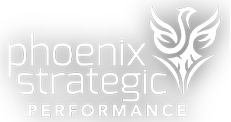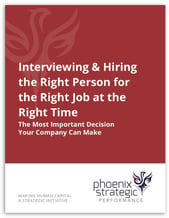The employee handbook may be underestimated, but it is certainly strategic!
Do you really need an employee handbook? This question predictably comes up when I speak with company management, often because the Employee Handbook is considered moderately useful but not on the top of management’s priority list. Why is that? Because often the Employee Handbook:
- Isn’t current
- Doesn’t cover the full range of issues
- Isn’t specific enough to be meaningful
- Isn’t given to new employees
- Isn’t used by management
However, one thing is for certain, when something goes wrong in an organization, the following happens:
- From the manager’s perspective: Managers look to the Employee Handbook for guidance and protection from liability.
- From the employee's perspective: Employees look to the Employee Handbook for guidance and protection from liability or loopholes created by omission or ambiguity.
In any event, the Employee Handbook becomes the default reference, and what happens when it doesn’t work?
My perspective:
When I am brought into a company on an organizational or employee issue, the first question that I will ask, and often a lawyer will also ask, is, ‘What does the Employee Handbook say”? It’s at that point that management realizes the full importance of having a robust, current Employee Handbook.
What is the purpose of an Employee Handbook?
Personally, I do not believe in creating layers of corporate bureaucracy for the sake of more bureaucracy, but let’s evaluate the real purpose of the Employee Handbook.
An Employee Handbook is a document that contains a company's operating procedures. It is typically given to an employee on their first day of employment. Employers use the Employee Handbook to establish important policies in the workplace and to protect the rights of both employers and employees.
You cannot underestimate the purpose of a clear, concise Employee Handbook in a business. A current and specific Employee Handbook can resolve disputes before they arise and protect both the employer and the employee from misperception and potential liability.
What’s in an Employee Handbook?
A robust Employee Handbook does the following for your organization:
1. Establishes expectations, clearly defines the boundaries for the employees, and details company rules and benefits.
2. Protects employers by clearly stating the policies and procedures that can prevent liability.
3. Establishes information about an organization’s policies regarding holidays, leave, work hours, pay procedures, overtime pay, performance reviews, recreational breaks, dress code, salary or pay revision, or pay procedures. The Employee Handbook contains information about orientation and training policies. It also includes information on both hiring and termination procedures.
4. Presents the organization’s policies on using the company and personal devices and other equipment within the office premises. Some companies have restrictions on the usage of communication devices like cell phones. Employee Handbooks also outline the terms and conditions for using these devices.
5. Conveys performance parameters and benefits employees receive on reaching those parameters. It also covers information regarding promotion and demotion and clearly helps employees gain clarity.
A current Employee Handbook brings uniformity to the organization, setting consistent guidelines for everyone to follow and stating the consequences of violating the rules. The handbook also informs employees of statutory laws regarding workplace behavior with co-workers and management. This prevents workplace conflicts and legal disputes.
So why wouldn’t you want a specific, robust, and current Employee Handbook? I can’t think of a single reason!
We invite you to download our latest eBook: "Human Asset Management Strategy: A New Approach," which provides a multifunctional operational guide to human capital capacity planning. You can also schedule a complimentary assessment with a member of our team.





